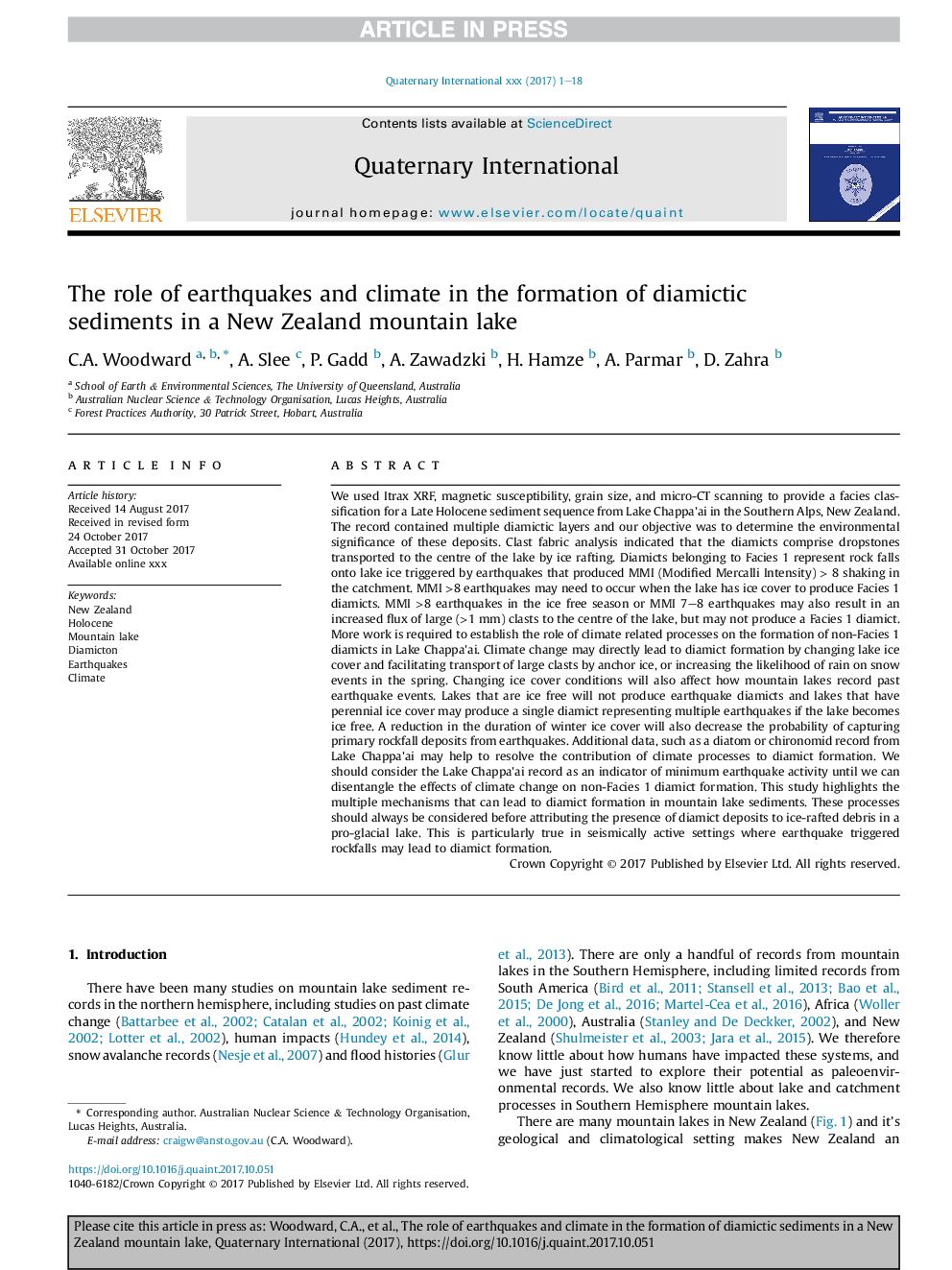| Article ID | Journal | Published Year | Pages | File Type |
|---|---|---|---|---|
| 7450266 | Quaternary International | 2018 | 18 Pages |
Abstract
We used Itrax XRF, magnetic susceptibility, grain size, and micro-CT scanning to provide a facies classification for a Late Holocene sediment sequence from Lake Chappa'ai in the Southern Alps, New Zealand. The record contained multiple diamictic layers and our objective was to determine the environmental significance of these deposits. Clast fabric analysis indicated that the diamicts comprise dropstones transported to the centre of the lake by ice rafting. Diamicts belonging to Facies 1 represent rock falls onto lake ice triggered by earthquakes that produced MMI (Modified Mercalli Intensity)Â >Â 8 shaking in the catchment. MMI >8 earthquakes may need to occur when the lake has ice cover to produce Facies 1 diamicts. MMI >8 earthquakes in the ice free season or MMI 7-8 earthquakes may also result in an increased flux of large (>1Â mm) clasts to the centre of the lake, but may not produce a Facies 1 diamict. More work is required to establish the role of climate related processes on the formation of non-Facies 1 diamicts in Lake Chappa'ai. Climate change may directly lead to diamict formation by changing lake ice cover and facilitating transport of large clasts by anchor ice, or increasing the likelihood of rain on snow events in the spring. Changing ice cover conditions will also affect how mountain lakes record past earthquake events. Lakes that are ice free will not produce earthquake diamicts and lakes that have perennial ice cover may produce a single diamict representing multiple earthquakes if the lake becomes ice free. A reduction in the duration of winter ice cover will also decrease the probability of capturing primary rockfall deposits from earthquakes. Additional data, such as a diatom or chironomid record from Lake Chappa'ai may help to resolve the contribution of climate processes to diamict formation. We should consider the Lake Chappa'ai record as an indicator of minimum earthquake activity until we can disentangle the effects of climate change on non-Facies 1 diamict formation. This study highlights the multiple mechanisms that can lead to diamict formation in mountain lake sediments. These processes should always be considered before attributing the presence of diamict deposits to ice-rafted debris in a pro-glacial lake. This is particularly true in seismically active settings where earthquake triggered rockfalls may lead to diamict formation.
Related Topics
Physical Sciences and Engineering
Earth and Planetary Sciences
Geology
Authors
C.A. Woodward, A. Slee, P. Gadd, A. Zawadzki, H. Hamze, A. Parmar, D. Zahra,
